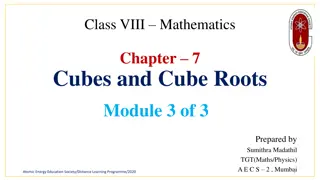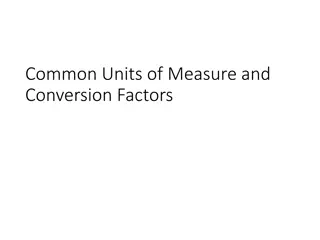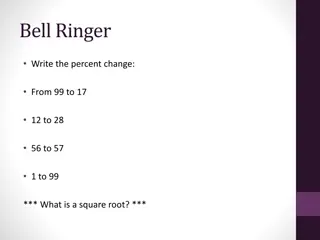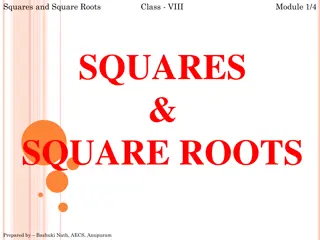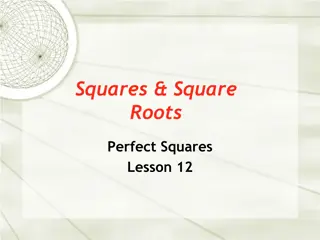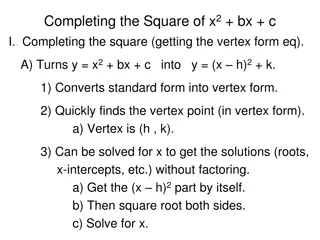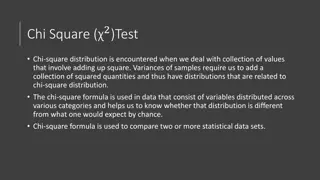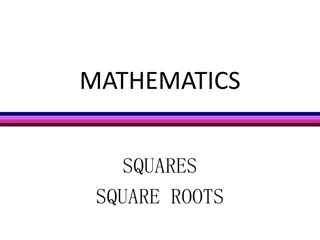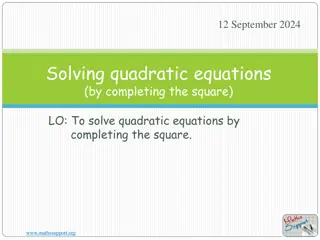
Understanding and Simplifying Square Roots
Learn about simplifying square roots, radicals, fractional exponents, and alternate methods for simplification. Discover the rules and techniques to simplify radical expressions effectively in mathematics.
Download Presentation

Please find below an Image/Link to download the presentation.
The content on the website is provided AS IS for your information and personal use only. It may not be sold, licensed, or shared on other websites without obtaining consent from the author. If you encounter any issues during the download, it is possible that the publisher has removed the file from their server.
You are allowed to download the files provided on this website for personal or commercial use, subject to the condition that they are used lawfully. All files are the property of their respective owners.
The content on the website is provided AS IS for your information and personal use only. It may not be sold, licensed, or shared on other websites without obtaining consent from the author.
E N D
Presentation Transcript
Definition of radicals Square roots usually show up in radical signs. Radical is another word for root: The square root of 9 is written: 9
Definition of radicals The radical sign is the house that the radicand lives in. The index tells you which kind of root it is. 416 The radical sign with no index showing means the principal (or positive) square root. 9
Simplifying radicals Exponents and their corresponding roots are opposite operations just like adding and subtracting or multiplying and dividing. = 2 9 9 = 2 ( 9) 9 If you square a positive number and then take the square root of the answer, you re right back where you started from.
Watch those signs! Keep in mind that squaring a number produces a positive answer. ( 9) = = 2 81 9 If you square a negative number and then take the square root of the answer, you ve made it positive.
Fractional exponents Another way to express a root, is to write a fractional exponent. An exponent of means the square root 1 2 = = 9 9 3
Fractional exponents When you are simplifying radicals, one way to do it is by thinking of the radical as a fractional exponent and applying the laws of exponents. Remember that when you raise a power to a power you multiply the exponents. 1 2 = = 16 16 8 ( ) x x x 1 2 1 2 1 2 10 = = = = 21 21 10 10 ( ) x x x x x x x
Alternate reality An alternate way to get the same answer, is by breaking the radicand down into prime factors and then using the index to tell you how many identical factors need to be in a group to move out of the house. For example: = y y = 3 2 8 2 2 2 2 2 x y x x x x y x Since the index is understood to be 2, a pairof 2 s can move out, a pair of x s can move out and a pair of y s can move out. Note, for each pair, only one shows on the outside.
Some more examples = 7 7 = 49 7 = 2 2 2 3 = 24 2 6 4 9 4 9 2 3 = = If there is a negative outside the radical, the answer is negative. = 9 9 = 81 9
Even roots of negative numbers If there is a negative inside the radical, there is no solution within the set of real numbers. 64 NO solution That is because there are no two identical numbers (same signs) that multiply to give a negative. Positive times positive = positive negative times negative = positive
ALWAYS SIMPLIFY Whenever you have a radical, simplify if you can!






